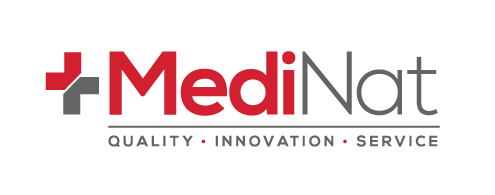Learn About AS/NZS 4760:2019 — The Australian Standard for Oral Fluid Drug Testing
Share
Learn About AS/NZS 4760:2019 — The Australian Standard for Oral Fluid Drug Testing
Published: • Category: Workplace Drug Testing Standards
AS/NZS 4760:2019 sets out how oral fluid (saliva) drug testing must be conducted in Australian and New Zealand workplaces. It defines drug classes, screening and confirmatory cut-off levels, collection procedures, and quality requirements — providing a consistent, defensible framework for workplace testing programs.
What Is AS/NZS 4760:2019?
Formally titled Procedures for specimen collection and the detection and quantitation of drugs in oral fluid, AS/NZS 4760:2019 replaced the 2006 edition to reflect advances in testing technology and drug-use patterns. It covers:
- Core drug classes to be detected
- Screening and confirmatory cut-offs
- Collection, handling, and chain of custody
- Requirements for training, QC, and documentation
- Minimum analytical performance criteria for devices and labs
Why the Standard Matters
Drug testing has real implications for people and safety. Following the standard helps ensure tests are accurate, fair, and defensible. For employers, compliance supports due diligence under WHS laws, reduces disputes, and promotes consistent policy enforcement.
Drug Classes Covered Under AS/NZS 4760:2019
The standard specifies six core drug classes detectable in compliant devices:
- Amphetamines (AMP)
- Methamphetamines (MET)
- Cocaine (COC)
- Opiates (OPI)
- Cannabis (Δ⁹-THC) — measured as the parent compound
- Benzodiazepines (BZO)
The emphasis on parent THC (not inactive metabolites) helps identify recent use, which is more relevant to current impairment risk and fitness for duty.
Cut-Offs & Confirmatory Testing
Each drug has two thresholds: a screening cut-off for onsite devices and a confirmatory cut-off verified by an accredited laboratory (e.g., GC-MS or LC-MS/MS). Onsite devices can only return negative or non-negative screens; only laboratory confirmation can establish a positive result. Your policy should document the pathway from screen to confirmation and any actions taken.
Why Oral Fluid Testing?
- Recent-use focus: typically ~6–24 hours (may vary by substance and usage)
- Observed collection: low privacy burden, harder to adulterate or substitute
- Fast workflow: ideal for post-incident, for-cause, random, and return-to-work testing
How AS/NZS 4760:2019 Differs from AS/NZS 4308:2023 (Urine)
| Feature | AS/NZS 4760:2019 (Oral Fluid) | AS/NZS 4308:2023 (Urine) |
|---|---|---|
| Sample Type | Saliva / Oral Fluid | Urine |
| Detection Window | ~6–24 hours (recent use) | Longer (days), historical use |
| Collection | Observed, non-invasive | Private, easier to adulterate |
| Primary Use | Fitness-for-duty / recent risk | Broader use monitoring |
| Key Advantage | Better indicator of current impairment risk | Wider historical detection |
Choosing AS/NZS 4760:2019-Aligned Test Kits
- Parent THC detection (Δ⁹-THC, not THC-COOH)
- Validated cut-offs aligned to the standard
- QC documentation and device performance data
- Access to accredited lab confirmation (GC-MS/LC-MS/MS)
At MediNat, our SalivaTracer™ Oral Fluid Drug Test is designed to align with AS/NZS 4760:2019 and support robust, compliant programs.
FAQs
Does AS/NZS 4760:2019 specify exact cut-offs?
Yes — the standard defines screening and confirmatory cut-off concentrations for each drug class to ensure consistent, defensible results.
Can an onsite saliva device report a “positive”?
No. Onsite devices report negative or non-negative. Only an accredited laboratory can confirm a positive via GC-MS/LC-MS/MS.
How long does saliva testing detect use?
Typically around 6–24 hours, varying by drug type, dose, and individual factors. It’s intended to indicate recent use.
Is AS/NZS 4760:2019 mandatory for workplaces?
While standards themselves aren’t legislation, many workplace policies and procurement frameworks require alignment. It supports WHS due diligence.
Which device should we choose?
Use a device aligned to AS/NZS 4760:2019 that detects parent THC, meets performance criteria, and has documented QC — e.g., MediNat’s SalivaTracer™.
Disclaimer: Information is general in nature and does not replace your company policy or legal advice. Product availability and configuration may vary. Always follow device instructions and applicable standards.
